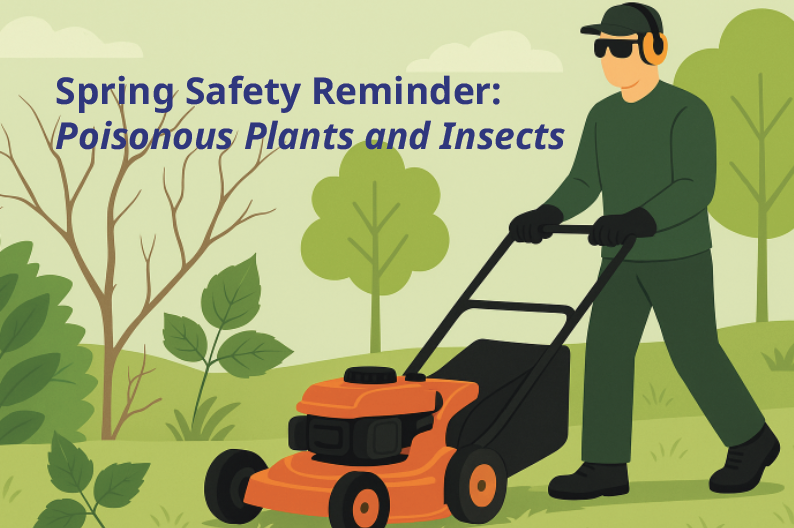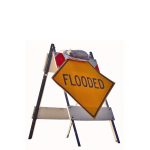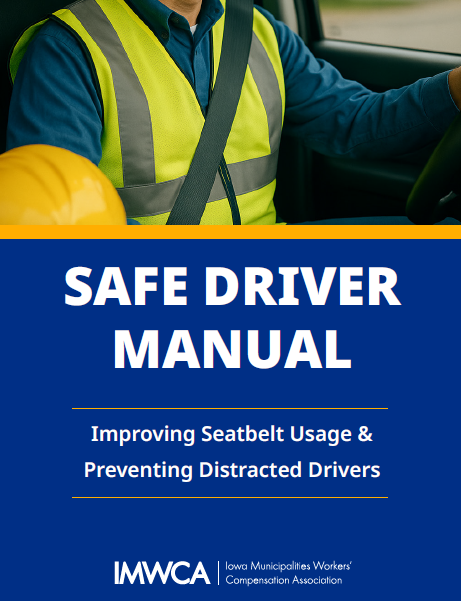
As the weather warms up and crews return to mowing and trimming, it’s time to revisit how employees can protect themselves from bites, stings, and skin reactions.
Watch and Listen Before You Mow
We encourage all employees to wear hearing protection while mowing or using weed eaters. However, keep in mind that ear protection can muffle the warning buzz of stinging insects. Before starting work, have employees inspect the area without hearing protection to check for bees, wasps, or nests. If insects are found, maintain a safe distance and take appropriate steps to mitigate the hazard. Be sure to mark these areas as potential hazard spots for others.
Protect Against Poisonous Plants
To reduce the risk of exposure to plants like poison ivy, IMWCA recommends wearing long sleeves and pants, especially while weed eating, when direct contact is more likely. Irritating plant oils can become airborne and remain potent even when the plant looks dead.
For more on plant identification, check out this helpful guide from the Iowa DNR:
How to Identify Iowa Poisonous Plants
Don’t Forget the Basics
Be sure to apply sunblock, wear eye protection, and stay hydrated. A few extra minutes of preparation can help ensure a safe and productive day in the field.

Missed Our Recent Training?
If you couldn’t attend our recent Virtual Round Table on Claims and MOD you can still catch up! Recordings are now available online. This is also a great resource to share at your next safety committee meeting.
Are Your Employees Ready for Flooding?

While Iowa has been experiencing a dry spell for the last year or two, there have been areas where heavy rains have caused flooding. In those areas, employees may find themselves having to navigate the floodwater in city, county, or agency facilities. In those cases, several risks can be present that the employees must be prepared for.
Electrical risk. Before employees enter a flooded area, they should make every effort to ensure all electrical power is de-energized to prevent electrocution. We have had utility employees suffer electrical shock while entering flooded basements in residential homes and commercial buildings.
Chemical and biohazards. Flood waters are often contaminated with chemicals and/or biohazards from several sources. Employees who must enter the water should wear heavy waders and waterproof gloves to avoid contact with the water. If you do come in contact with the water, be sure to wash with soapy water. If you have an open wound exposed to flood water, you should consult with your medical provider about getting a tetanus booster.
Hidden trip hazards or sharp edges. Obstacles that can cause tripping or cuts to employees can be obscured by the dark, moving water. Try to use a walking stick to feel for uneven walking surfaces or hidden problems under the water.
Current. Always be careful of the current when entering a flooded area. Even when driving across a flooded road, the current may be fast enough to carry a pickup into deeper water. Many people have drowned by underestimating the force of the current while trying to drive across a flooded road.

Updated Safe Driver Manual
Now Available
IMWCA has recently updated its Safe Driver Manual to better support our members in promoting safe driving practices. This resource is designed to help cities and counties create, train on, and enforce policies that prioritize safety behind the wheel. It offers practical guidance for both employees and elected officials who operate vehicles or equipment as part of their job duties.
Highlights include a Model Seatbelt/Restraint Policy and a Distracted Driving Policy, two essential tools for reducing risk on the road.




